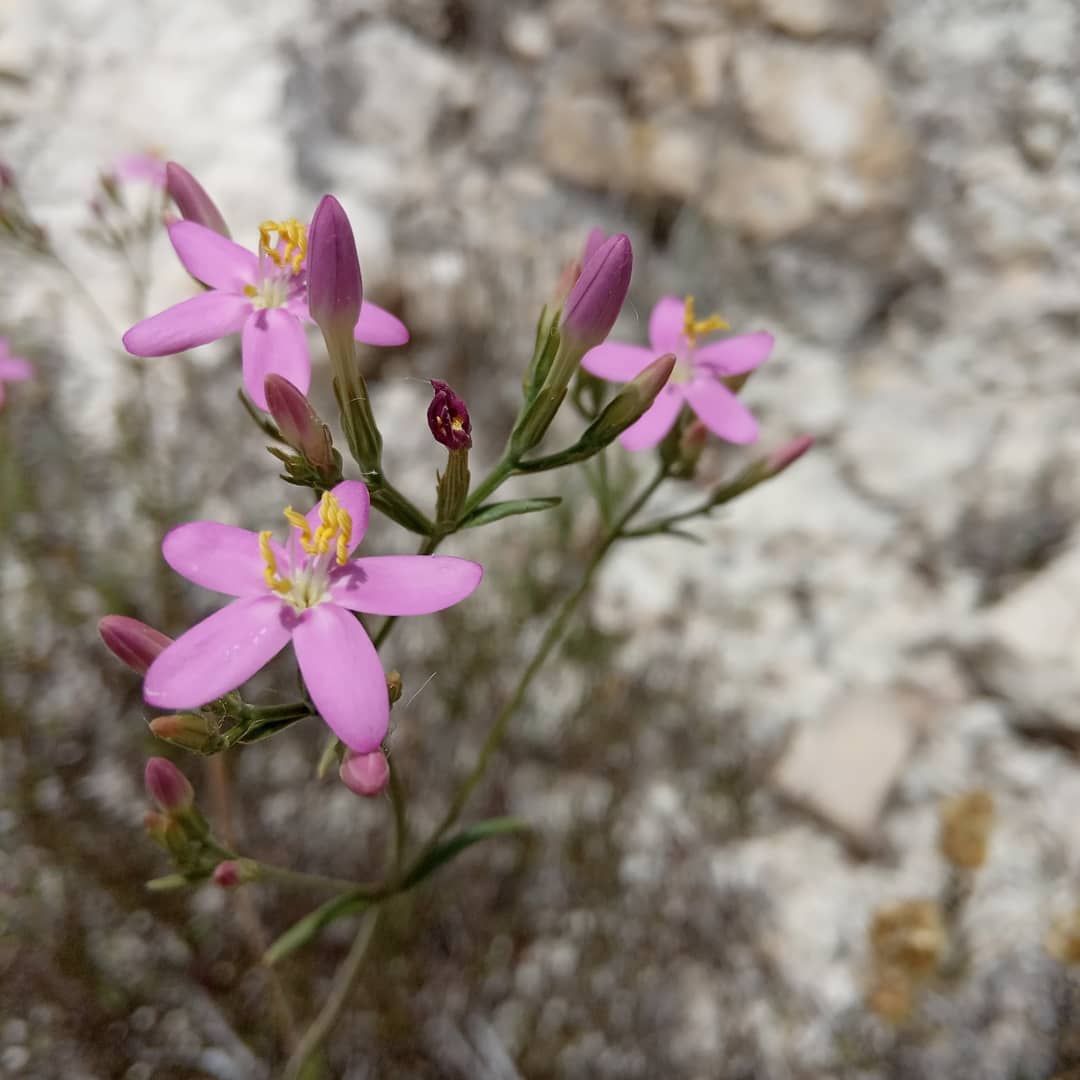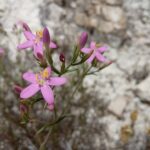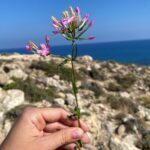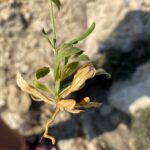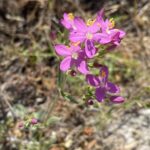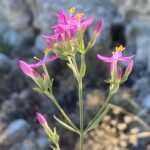Κενταύριο το ερυθρό
Etymology of Centaurium erythraea subspecies rhodense: The name Centaurium derives from the ancient Greek centaur Chiron. The naming of the plant is attributed to Dioscoridis (ancient Greek doctor/pharmacist/herbalist/botanist). According to Pliny, the centaur Chiron used this plant to heal an arrow wound in his foot. The epithet "erythreae", both in Latin and Ancient Greek means "reddish", referring to the colour of its petals. Latin "rhodense" means "a native or inhabitant of Rho", probably referring to the region where it was initially recorded.
There are around 7 Centaurium species and subspecies/kinds in the wild Cypriot habitat.
Centaurium erythraea subsp. rhodense may be found all-around Cyprus except for a big part of the Mesaoria region (from Morfou until Ammochostos), but it is in fact an uncommon plant to encounter. It appears up to an altitude of 1075 metres. Its flowering period is from May until July.
The plants captured on camera were grown on argillaceous soil, reaching about 30-40 cm in height and were bloomed in May and June.
How to identify Centaurium erythraea subspecies rhodense:
Its corolla lobes are longer than 5 mm, as happens with Centaurium mairei and Centaurium serpentinicola.
Centaurium erythraea subspecies rhodense and serpentinicola appear somewhat "tall", mairei is very short.
Centaurium erythraea subspecies rhodense's leaves are commonly forming a persistent rosette (serpentinicola looks naked of leaves); the corolla lobes are 8-12 mm long (for the other two 5-8.5 mm).
Additionaly, the plant is not branched near the base as Centaurium pulchellum subsp. pulchellum and their inflorescence are not repeatedly branched as happens with Centaurium tenuiflorum subspecies.
